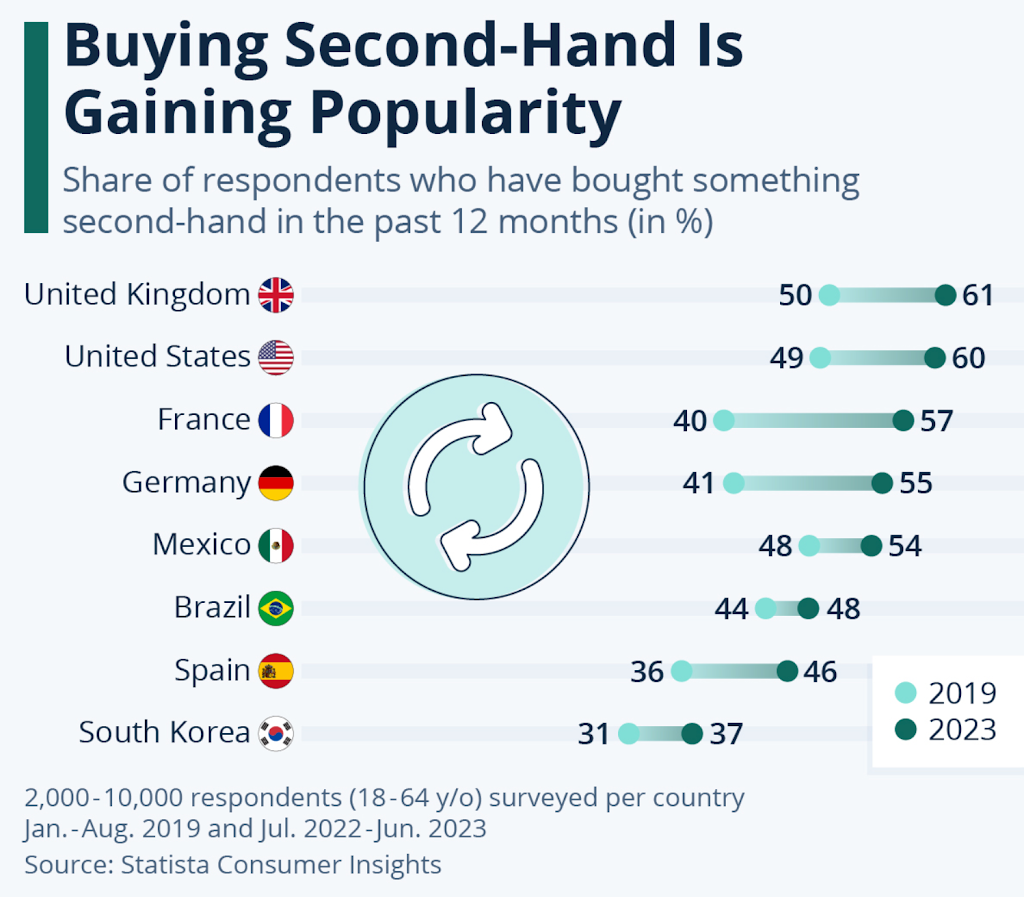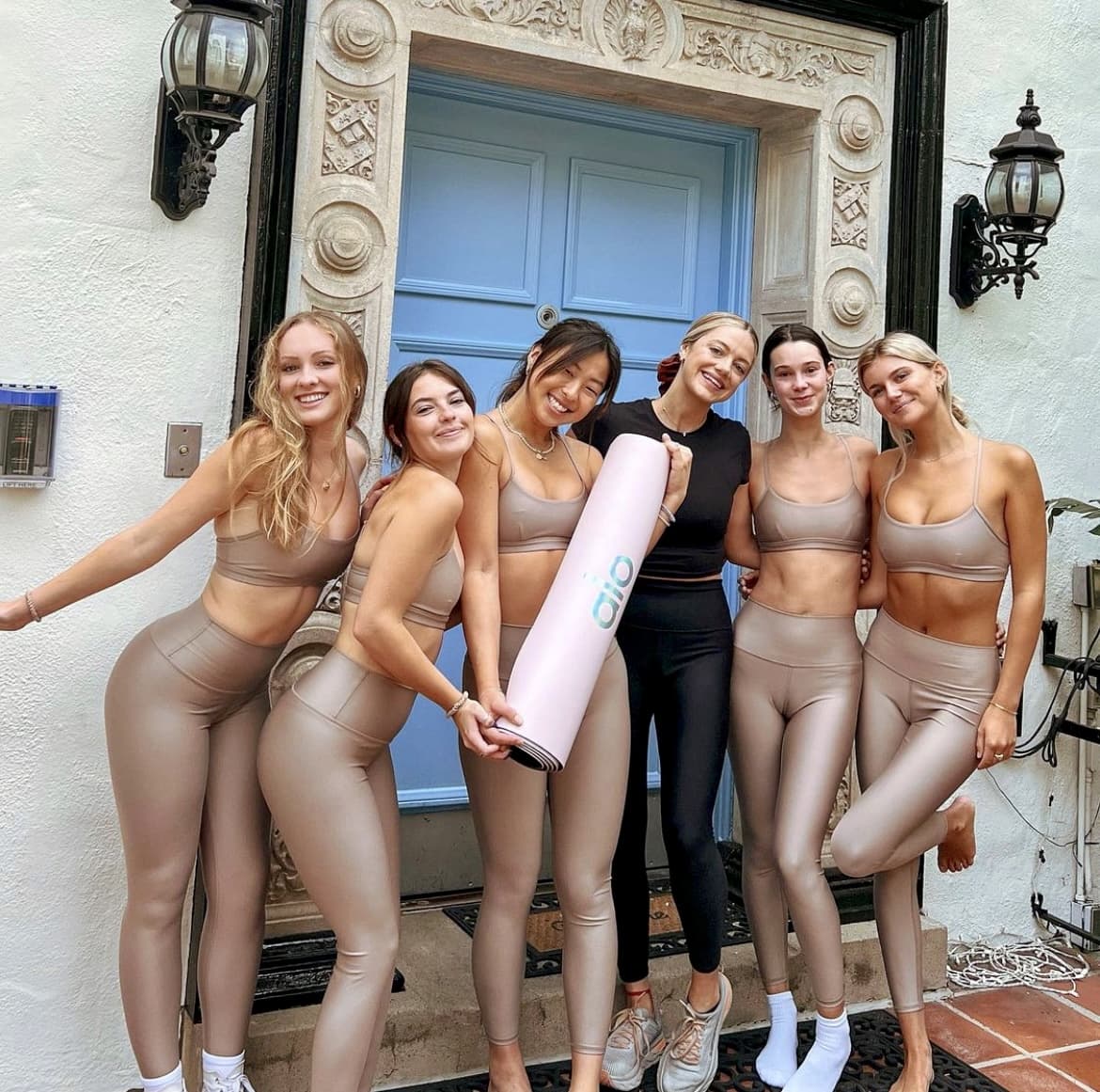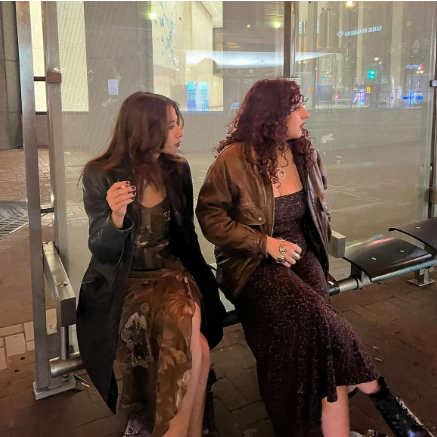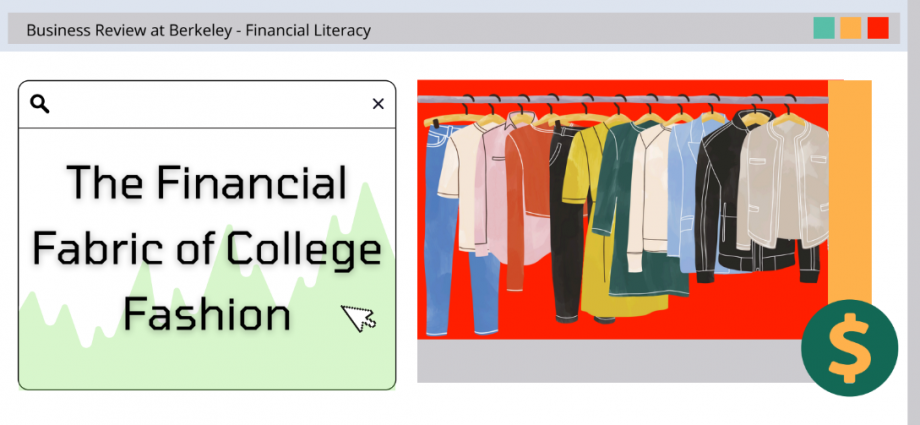Author: Allie Adajar, Graphics: Jennie Wang
The BRB Bottomline: This article examines customer prices, production costs, and sustainability in primary modes of fashion. Read on for an investigation of finance in the fashion industry and a guide to being an effective college shopper.
Whether you thrift, purchase name brands, or buy from fast fashion companies, there are significant benefits and drawbacks to different modes of shopping that should be considered in your future fashion endeavors. Through an exploration of these different modes, this article aims to assist you (presumably a busy college kid) in spending smarter on clothes.
The Thrifting Threshold
The Financial Attraction of Eclectic Styles
Most college students live on a limited budget. With expenses such as tuition, food, savings, and bills, fashion and other personal purchases usually come last. For people living on or around college campuses, particularly around the Berkeley campus, thrifting shines as an option for sourcing clothes because of its affordability and ease of access.
Thrift stores around Berkeley such as Anastasia’s understand the market that they cater to. In interviews with thrift-experienced Berkeley students, one stated that the average price she pays for thrifted clothes in Berkeley is $15.Another student similarly said they paid $10. A third explained, “Goodwill or Salvation Army have similar prices which range from $5 to $20 depending on what you buy, and the Goodwill bins are by the pound, so each item will be about $1 to $4.”
While thrift culture is an especially viable option for college students, the trend has utility for all demographics and has grown exponentially across America. A recent survey from PR Newswire indicated that 82% of Americans engage in thrifting and secondhand shopping. This is approximately the same number of Americans who own a smartphone. A 2024 report from Capital One Shopping illuminated how thrift shoppers save an average of $1,760 per year. Thrifters have also managed to save through online trading platforms like DePop, where each purchase yields an average savings of 25% per thrifted item compared to new. In layman’s terms, thrifting is cheaper than new items, and individuals who thrift generally spend significantly less on their wardrobe.

Image 1 (Statista): A 2023 survey underlines the rise of secondhand shopping across various locations worldwide.
Self-Expression and Diverse, Unique Finds
Even if you’re not quite sure of your style yet, thrifting is an inexpensive way to explore numerous trends and designs to see what sticks. One interviewee did just that, and she now finds herself not feeling the need to buy more clothes very often: “I’ve learned that slow consumption is my best friend… I’m now a much more minimal dresser and know exactly what I like and will actually wear.” Thrifting allowed her to experiment with fashion in a fiscally responsible manner, which eventually led to less overall consumption once she found her groove and made space for her to stretch her budget for essentials.
While there are many upsides, a common concern among secondhand consumers is the condition of thrifted clothes. Since most of them are pre-used, there is a widespread perception that thrifted clothes are of poor quality. When asked about this concern, a student thrifter answered, “Most of the clothes I buy are still in good condition… the most common defect I’ve dealt with is broken zippers, but that’s pretty easy to work around.” Another college student described many of his finds to be in “mint condition.” Although it may sometimes take some digging, there are plenty of intact, durable items to be found when thrifting.
Wardrobe aside, thrifting also has potential as a side hustle. Purchasing brands at discount rates and then reselling them for a profit is a pastime for many young adults looking for a quick buck. The emergence of online thrifting has further opened up the resale market by offering easy ways to connect with networks of people who shop secondhand. If you are looking for another source of income, online selling could be an option for you.
Lusting for Luxury
Prices, Prices, Prices!!!
In addition to cheaper clothing opportunities, many college students enjoy buying clothes from luxurious higher-end brands. While thrifting is quite popular clothes culture often also revolves around expensive and high-end clothing.
College students buying clothes at retail prices is especially prevalent at private institutions, where brands and the status they bring are highly coveted. A student at Texas Christian University claimed, “I pretty much always buy new clothes.” When asked what type of clothing her friends buy and wear regularly, she responded, “My friends love Aviator Nation and Amazon clothes, and everyone I know wears Lululemon or Alo at least 3 times a week.” Just a few states away from Berkeley, the fashion norms are vastly different. For instance, men’s pants and joggers from Lululemon generally cost from $98 to $148. Alo sweatshirt prices range from $88 to $218. These prices of typical clothing pieces are a far cry from the average prices that many Berkeley student thrifters pay.

Image 3 (Alo): UCLA students proudly endorse Alo.
To some extent, these prices can be justified by the guaranteed durability and quality of the materials. Luxury brands achieve longevity in their items with meticulous attention to detail and strong, reliable materials. Furthermore, these brands tend to stick to classic and timeless designs to maintain relevance and outlast vicious trend cycles. Purchasing from these brands can prove to be a worthwhile long-term investment, remaining steadfast in quality and use.
Though these prices are exorbitant, there are methods of attaining this attire at lower rates. Many online retailers sell used luxury goods at considerable markdowns, such as The Outnet with up to 75% discounts. Additionally, many companies offer ambassadorship: if you are deemed suitable to represent their brand, you can garner perks such as extended discounts during the holidays. By seizing opportunities like this, you can indulge in extravagance without breaking the bank.
The New Status Quo: High-End Fashion
Furthermore, students often sport popular clothing brands to create a sense of community and belonging, which illustrates how fashion trends are primarily influenced by what other people are wearing, regardless of the price. Doc Martens and Lululemon flared yoga pants are a couple of examples of expensive trending apparel commonly seen on many college campuses, illuminating students’ relentless engagement with fashion trends.
Name-brand merchandise like Golden Goose sneakers and Adidas’s Samba shoes act as more than just clothes; they are powerful indicators of individual social status and identity. Even if it is difficult to admit, flaunting expensive items can feel satisfying and empowering. People frequently invest in these labels to demonstrate their wealth and status or to identify with a particular aesthetic or way of life, which can potentially improve social networking as well.
For instance, many college finance students – aka “finance bros” – can be seen buying Patagonia as it mirrors the fashion of those in the business and finance professions. The previous three years have seen a nearly 700% surge in sales of the brand’s fleece zip vests. New York is the largest market with states like Texas, California, Massachusetts, and North Carolina following closely behind. The fleece zip vest is praised for its adaptability, as it can be worn in both casual and business settings. Participating in current trends and patterns promotes a sense of security and inclusion within your chosen group in society as following fashion trends becomes a way to navigate social dynamics.
Fueling Fast Fashion
Attractive Prices
Although many students and consumers alike tend to gravitate towards prestigious, high-end name brands, other cheaper initiatives exist that offer a financially accessible alternative. Such companies are commonly referred to as fast fashion: inexpensive clothing rapidly produced by mass-market retailers in response to the latest trends. As consumers, we have started to prioritize quick access to the latest styles over durability, a behavior that acts as a driving factor for the rise of fast fashion.
Known as a forerunner in the fast fashion industry, the Swedish company H&M sells jeans at various enticing prices, going as low as $17.99, while a pair of Levi’s men’s jeans, a more high-end denim, typically costs around $69.50. Similarly, the Spanish-based company Zara carries women’s hoodies with prices as low as $29.90, and the cost of production is a meager $8.47. Not only are cheap clothing items found in thrift stores, they are distributed by large-scale multinational corporations that set low prices to adhere to the younger generations’ consumer needs.
This industry has emerged as another light of affordability separate from thrifting, consistently providing a wide range of trending clothes at relatively low prices. Since many of these businesses regularly offer sales, promotions, deals, and discounts, shoppers can get even more with their limited money. From “buy-one-get-one-free” specials to limited-time clearances, fast fashion succeeds in increasing the accessibility of fashionable clothing for people with budget constraints.

Image 5 (Business Insider): A visual of one of H&M’s large sales.
The Deeper Advantages
Fast fashion is of the utmost convenience in its consistent, easy-access locations including malls and highly frequented shopping areas. As of January 2024, there are 103 Zara stores in the United States, located in 26 states and 78 cities. There are also 493 H&M stores in the United States as of January 18, 2024. While fast fashion is known for its affordability and widespread availability, offering a wide range of styles in fair quality, its appeal extends beyond mere convenience and offers deeper advantages that often go unnoticed.
Since fast fashion continually introduces new products, it is a highly profitable industry for manufacturers and retailers. Customers are urged to go to these stores more often due to the consistent new goods, leading to increasing sales. For example, Zara changes its clothing designs every two weeks. Today’s culture of consumerism fuels the desire to keep hopping onto the newest trends, driving a pattern of constant purchasing. The rapid rate of fast fashion design, production, and distribution appeals to the quick-gratification mindset that overtakes consumer minds.
Fast fashion has democratized the industry by lowering the cost of apparel and opening it up to a wider range of buyers. With successful companies such as Uniqlo, trending clothing is no longer only accessible to the wealthy, and fast fashion is similar to thrifting in its ability to enable artistic expression and experiment without hurting one’s bank account too much. The fast fashion model has shifted the mechanics of the fashion industry by expanding company revenue and fulfilling consumer demands and preferences.
Berkeley’s Avant-Garde Culture
With thrifting being such a prevalent practice at our university, peer pressure may be a driving factor in choosing to thrift. Interviews with a few Berkeley students provide some personal insight. One student said, “My personal sense of style is somewhat influenced by what I think will be accepted and appreciated by my peers.” Another Berkeley student explained, “I never shop firsthand, and I don’t want clothes that other people have… my friends all wear thrifted clothes… I like the style of people who thrift more than those who shop firsthand.”

Image 7 (Instagram): Two Berkeley students rocking their thrifted outfits.
A third Berkeley student offered, “People who partake in giving clothing a second life will always be cooler than those who buy brand new to me… I mean why shop when something so much less generic already exists? Don’t you want to look unique? Don’t you want to treasure hunt?” There is such an intense emphasis on being yourself, yet a juxtaposition is created when those who don’t conform to thrifting expectations receive backlash, especially when it is as prevalent as it is here at Cal.
With contrasting opinions depending on the location, socioeconomic status, and cultural norms of each college campus, behaviors will vary on whether or not students consume low-end cheaper products or high-end fashion. In this world of fast-paced consumerism, it is essential to be aware of the financial fabric of each “cop” in your pursuit of self-expression.
Take-Home Points
- Thrifting is a cost-effective choice for people on a tight budget like the majority of college students.
- Thrifting encourages people to experiment and develop their sense of style with a wide range of accessible products.
- Although expensive, high-end brands are of durable and unparalleled quality, and there are ways to pay less.
- Students can utilize clothing brands by participating in trends that reflect societal dynamics and enhance social networking.
- Fast fashion companies like Zara and H&M provide cheap alternatives to high-end brands and easy, convenient access to trends.
- Fast fashion’s frequent production drives profitability and democratizes fashion by lowering costs and expanding accessibility.

